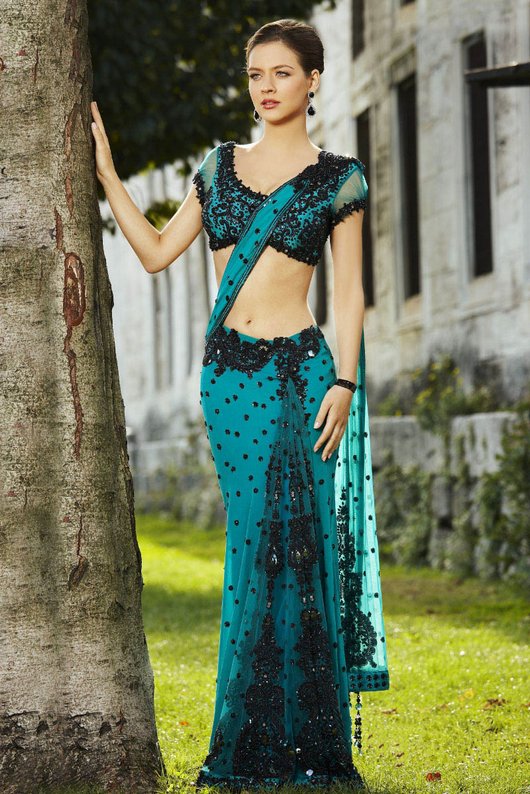online saree shopping Biogarphy
Source(google.com.pk)Kanchipuram has only been weaving Silk sarees for the past 150 years and specialises in a heavy silk sari woven with tightly twisted three-ply, high-denier threads using thick zari threads for supplementary - wrap and -- weft patterning. Interlocked-weft borders are common. Along with silk sarees, Kanchipuram also specialises in cotton and silk-polyster blended sarees with the demand of the current market.
Many of today's established Kanchipuram Silk weavers trained in the cultural centre of "Kalakshetra" during the 1970's producing sarees with designs that are some what 'heavy' in both style and fabric weight, with very wide bordes. Traditional motifs such as, mango, elephant, peacock, diamond, lotus, pot, creeper, flower, parrot, hen, and depiction of stories from mythology are very common in Kanchipuram sarees. Cotton sarees are ornamented with threads and some silk sarees are also woven with thread instead of pure zari.
Silk and cotton is sourced from Bangalore and Surat is the only place where zari is brought. The recent development in the designing field shows the introduction of computerised Jacquard borders in Kanchipuram silk sarees. Though the techniques and the materials are changing with the market demand; the motifs are still conventional and traditional in order to hold the custom and tradition of a Kanchipuram saree.
Kanchipuram sarees are very heavy and gorgeous sarees and are used specially for weddings in South Indian region as their traditional wedding saree.
There are at least 40 village's within a 70 k.m. radius of Hyderabad, the capital of Andhra Pradesh, including Pochampalli, Koyalagudam, Puttapakka, Elanki and Chautupal where ikat textiles are woven. Here ikat weaving has become a way of life -- from child to grandparent, every family member is involved at one stage or another.The term ikat stems from the Malay - Indonesian expression 'Mangikat' meaning to bind, knot or wind around. In principle, ikat or resist dyeing, involves the sequence of tying(or wrapping) and dyeing sections of bundled yarn to a predetermined colour schme prior to weaving. Thus the dye penetrates into the exposes section, while the tied section remain undyed. The patterns formed by this process on the yarn are then woven into fabric. The three basic forms being single ikat, where either wrap or weft threads are tied and dyed prior to weaving is combined ikat, where wrap and weft ikat may co-exist in different parts of a fabric occassionally overlapping and double ikat which is by far the most complex form. Here both wrap and weft threads are tied and dyed with such precision, that when woven threads form both axis, mesh exactly at certain points to form a complete motif or pattern.
online saree shopping Photos Pictures Pics Images
.jpg)
online saree shopping Photos Pictures Pics Images

online saree shopping Photos Pictures Pics Images

online saree shopping Photos Pictures Pics Images

online saree shopping Photos Pictures Pics Images

online saree shopping Photos Pictures Pics Images

online saree shopping Photos Pictures Pics Images

online saree shopping Photos Pictures Pics Images

online saree shopping Photos Pictures Pics Images

online saree shopping Photos Pictures Pics Images

online saree shopping Photos Pictures Pics Images
read your beautiful blog for Online Shopping Women clothing Fashion Wedding bridal and designer sarees Collection perfect younger women or girls . Thanks !
ReplyDelete